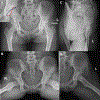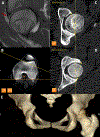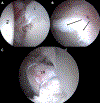Team Approach: Hip Preservation Surgery
- PMID: 37793005
- PMCID: PMC11421827
- DOI: 10.2106/JBJS.RVW.23.00041
Team Approach: Hip Preservation Surgery
Abstract
The evaluation and treatment of adolescents and young adults with hip pain has seen tremendous growth over the past 20 years. Labral tears are well established as a common cause of hip pain but often occur because of underlying bony abnormalities. Femoroacetabular impingement (FAI) and acetabular dysplasia are now well-established causes of hip osteoarthritis and are increasingly treated in the prearthritic stage in hopes of improving symptoms and prolonging the longevity of the native hip. Beyond FAI and acetabular dysplasia, this patient population can present with a complex and variable group of underlying conditions that need to be taken into account. Expertise in the conservative management of this population, including physical therapy, is valuable to maximize the success. Preoperative, surgical, and postoperative decision-making and care in this population is complex and evolving. A comprehensive, multidisciplinary approach to the care of this patient population has been used for over 20 years by our institution with great success. The purpose of this article is to review the "team-based approach" necessary for successful management of the spectrum of adolescent and young adult hip disorders.
Copyright © 2023 by The Journal of Bone and Joint Surgery, Incorporated.
Conflict of interest statement
Disclosure: The Disclosure of Potential Conflicts of Interest forms are provided with the online version of the article (http://links.lww.com/JBJSREV/B12).
Figures






References
-
- Bonazza NA, Homcha B, Liu G, Leslie DL, Dhawan A. Surgical Trends in Arthroscopic Hip Surgery Using a Large National Database. Arthroscopy. 2018. Jun;34(6):1825–30. . - PubMed
-
- Bedi A, Kelly BT, Khanduja V. Arthroscopic hip preservation surgery: current concepts and perspective. Bone Joint J. 2013. Jan;95-B(1):10–9. - PubMed
-
- Bedi A, Kelly BT. Femoroacetabular impingement. J Bone Joint Surg Am. 2013. Jan 2;95(1):82–92. - PubMed
MeSH terms
Grants and funding
LinkOut - more resources
Full Text Sources
Medical
Miscellaneous

